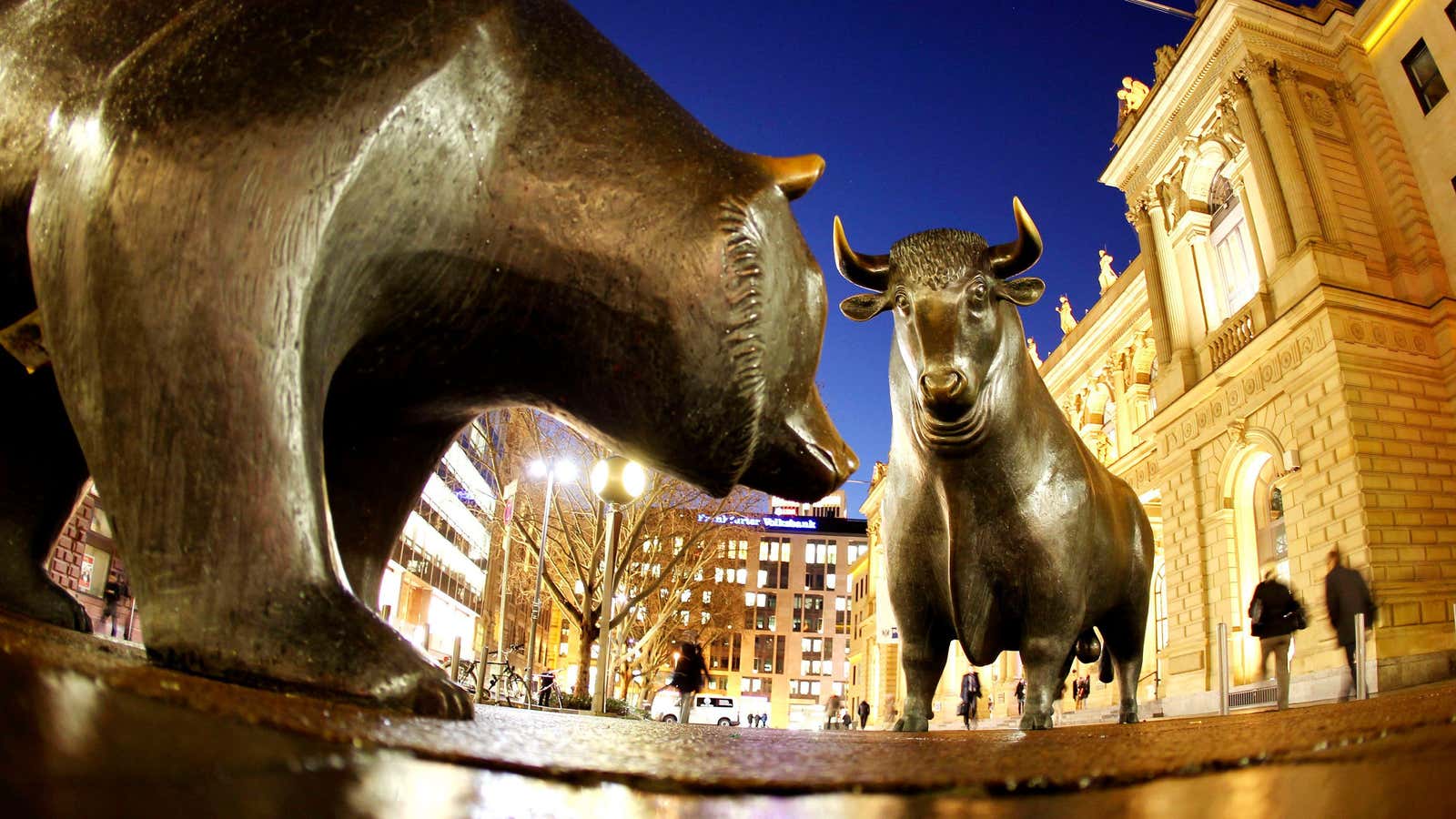We’re in the midst of the longest bull market in American history, which began in March 2009. But the bull has been stumbling pretty badly of late, leading some analysts to investors to wonder whether this is the start of a bear market, commonly measured by a 20% fall from a previous peak.
After a brutal decline in US stocks today, both the S&P 500 and Dow Jones Industrial Average slipped into the red for the year, erasing all the gains made in 2018. The benchmark S&P 500 has fallen more than 9% from its all-time peak last month—so we’re about halfway to a bear market, if stocks continue to slide.
Today, the S&P 500 fell by more than 3%, the Dow lost more than 2%, and the tech-heavy Nasdaq fell 4.4%, its biggest one-day drop since 2011 (paywall). Benchmark US stock indexes are on track for their worst month in years, in some cases all the way back to the 2008 financial crisis. The Nasdaq and small-cap Russell 2000 are both now in “correction” territory—that is, down more than 10% from recent highs.
What happened? Bank of America keeps a running tally of so-called “signposts” that signal a bear market coming ’round the bend. This month, the analysts checked two more off the list, bringing the total to 14 out of 19 indicators. The latest signals include the VIX volatility index climbing above 20, and surveys of investors showing that many think they will continue to go up, a classic contrarian indicator.
Although the latest batch of corporate profits have been good, they haven’t been great—as reports from bellwethers like Caterpillar and 3M revealed earlier this week. ”If U.S. companies can’t blow away the numbers when domestic GDP is growing at [greater than] 3%, when exactly will they?” DataTrek’s Nicholas Colas wrote in a recent research note.
The analysts at Bank of America, for their part, don’t seem overly concerned that a bear is about to roar: Their research suggests that the S&P 500 usually takes nearly two years to peak after this many bear-market signals have been triggered. Despite its recent wobbles, there may be more life in this old bull yet.
